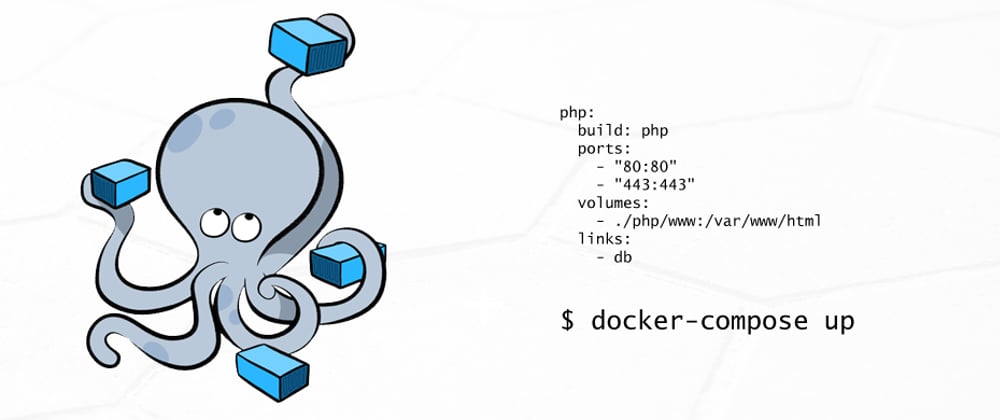Deploying applications with multiple containers has become a common practice in today's fast-paced development environment. Docker Compose is a powerful tool that simplifies the process of deploying multi-container applications.
In this article, we will explore the step-by-step process of deploying a multi-container React.js and Node.js application using Docker Compose. Whether you are a seasoned developer or just starting your journey, this guide will equip you with the knowledge and expertise needed to successfully deploy your application.
How to Deploy Multi-Container React.js and Node.js With Docker Compose
Understanding Docker and Docker Compose
Before diving into the deployment process, let's briefly understand what Docker and Docker Compose are. Docker is an open-source platform that allows you to develop, ship, and run applications in containers. Containers are lightweight, portable, and self-sufficient units that encapsulate the application and all its dependencies.
Docker Compose is a tool that enables you to define and manage multi-container applications using a simple YAML file. It allows you to specify the services, networks, and volumes required for your application, making it easier to deploy and manage complex applications.
Setting Up the Development Environment
To get started with deploying a multi-container React.js and Node.js application, you need to set up your development environment. Ensure you have Docker and Docker Compose installed on your machine. You can refer to the official documentation for detailed installation instructions for your specific operating system.
Creating the Dockerfile for React.js
The first step in the deployment process is to create a Dockerfile for your React.js application. The Dockerfile defines the image for your application, specifying the base image, dependencies, and commands to run when the container starts.
Creating the Dockerfile for Node.js
Next, you need to create a Dockerfile for your Node.js application. This file will define the image for your Node.js server, including all the necessary configurations.
Creating the Docker Compose File
With the Dockerfiles ready, it's time to create the Docker Compose file, which will define and manage both containers and their configurations. This YAML file will make deploying the multi-container application a breeze.
Deploying the Application
With the Docker Compose file in place, deploying the multi-container React.js and Node.js application is as simple as running a single command:

This command will build the Docker images for both the React.js and Node.js applications and start the containers. You will see the logs for each service in your terminal. Once the containers are up and running, you can access your application at 'http://localhost:3000'.
Scaling and Load Balancing
One of the significant advantages of using Docker Compose is the ability to scale your application effortlessly. If your application experiences increased traffic and load, you can scale the services as needed.
To scale the Node.js service to two replicas, use the following command:
Docker Compose will automatically create two instances of the Node.js container and distribute the load between them.
FAQs
Q:1 What is Docker Compose?
Docker Compose is a tool that simplifies the deployment and management of multi-container applications by using a YAML file to define the services, networks, and volumes required for the application.
A: Docker Compose is a powerful tool that simplifies the process of deploying multi-container applications.
Q:2 Can I use Docker Compose with any application?
Docker Compose is especially useful for applications that have multiple services and dependencies, making it easier to manage complex deployments. It is not limited to specific programming languages or frameworks.
A: Yes, Docker Compose can be used with various applications, regardless of the technology stack.
Q:3 Is Docker Compose suitable for production deployments?
While Docker Compose is great for development and testing environments, for production deployments, it's recommended to use container orchestration tools like Kubernetes or Docker Swarm for better scalability and reliability.
A: Docker Compose is more suitable for development and testing environments. For production deployments, consider using container orchestration tools.
Q:4 Can I use Docker Compose on Windows and macOS?
Docker Compose is compatible with Windows, macOS, and Linux operating systems. You can easily set up and run Docker Compose on these platforms.
A: Yes, Docker Compose is supported on Windows, macOS, and Linux.
Q:5 How can I update my application in Docker Compose?
To update your application in Docker Compose, you can make changes to your code and then rebuild the Docker images using the docker-compose up --build command.
A: Updating your application in Docker Compose involves making code changes and then rebuilding the Docker images.
Q:6 Can I run Docker Compose on a server or cloud platform?
Docker Compose can be run on a server or cloud platform as long as Docker is installed. Many cloud providers offer support for Docker and allow you to deploy your multi-container applications easily.
A: Yes, you can run Docker Compose on a server or cloud platform with Docker installed.
Conclusion
Deploying multi-container applications with React.js and Node.js using Docker Compose offers a streamlined and efficient approach to managing complex deployments. By following the step-by-step process outlined in this guide, you can confidently deploy your applications with ease. Embrace the power of Docker Compose, and take your development process to the next level.







Top comments (0)